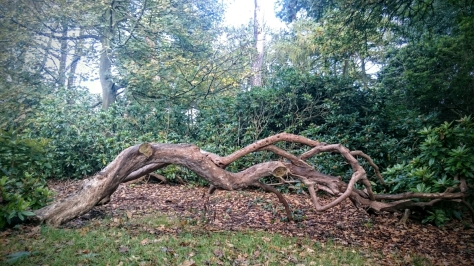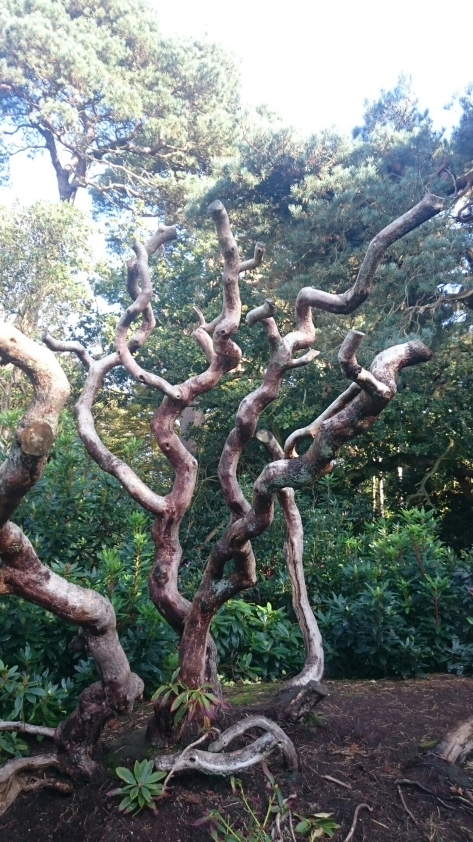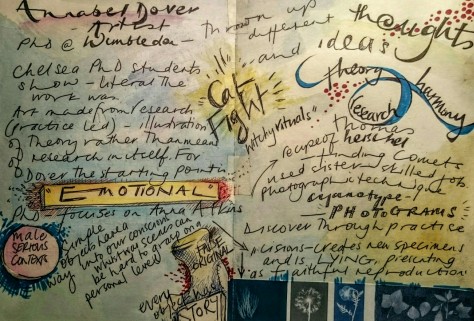I went on a lovely walk in Sheringham Park last week. On a flying visit to Norfolk I enjoyed recording trees, which I am always drawn to. I am particularly fond of those that have anything remotely ‘human’ in their stretching limb-like branches, and am delighted when there is any suggestion of an embrace. Of course, the trees are NOT holding each other, but the experience of looking at extended or elongated line, and imagining the isolation of the woods leaves me craving a comforting narrative. The twisting contortion and curving of trunks and branches is often the focus of my work and many other artists also look at trees with similar whimsical enthusiasm. I am inspired by Heather Jansch’s driftwood sculptures, Andy Goldsworthy’s land art, Henrique Oliveira’s recycled wood sculptures which pierce through the walls and ceilings of exhibition spaces, completely overwhelming them whilst snaking through the space. I am also inspired by Nancy Mellon and other artists who work on ‘dressing’ trees with knitted patches. I remember reading about a tree being covered in knitted patches to remind people about the plight of the homeless with winter setting in. It served to draw attention to the cause and alert the public to the fact that it is so much harder to find warmth whilst living on the street.
I played with the images I had taken, using software which gave me the opportunity to rotate, flip and mirror the original images. These then became geometric works and patterns which I enjoyed for a number of reasons. They are strikingly different to my usual work. I like the natural stretch of a branch, but have never explored these as part of a rigid structure more in line with a stained glass window in a church. I was also finding it entertaining that the imagery, once flipped or mirrored became something completely ‘other’. Viewers can make their own minds up about what the imagery reminds them of.
The top left-hand image was taken at the Royal Academy where I saw Ai Weiwei’s exhibition. I was immediately made to feel connected to the exhibition by walking through his constructed tree installation in the forecourt of the RA. It appears that you do not even need to travel to Norfolk to find some ‘good trees’.












